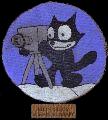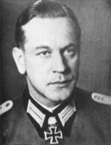Leandros
Posts: 1740
Joined: 3/5/2015
Status: offline

|
OK, here goes the second part of my “Saving MacArthur” experiment. The first was to learn the basics of WITP and to try to find out whether it can be used as a
tool to keep track of a necessarily different scenario based on an alternative attitude of the US leadership and a decision to go for solutions mainly
(egoistically) covering US (Philippine) needs.
As a databank and filing cabinet the game as such as proved even better than I had hoped for. That the AI was more aggressive, and reacted faster and more
effectively than RL (my opinion), only contributes to the realism of the experiment.
The first try was marred by some serious mistakes by me in the (technical) use of the game. This influenced on an otherwise tight schedule. Considering that,
I’m quite pleased with how it developed. The main (lack of) result caused by this was an “absent” Pensacola convoy with much of its resources missing, apart
from its dive bombers which I “cheated” into the game, and the delayed arrival of bombers and PBY’s. Many US, Dutch and Australian units were also restricted
for the use envisioned in the scenario. PP’s shall eventually be neglected due to an aggressive Washington policy.
Other factors are the single and group-sailing ships ahead of and behind the Pensacola convoy. In main, the transports Ludington, Mauna Loa, Joseph Lykes,
Jane Christenson, Portmar Jupiter, Montgomery City and Malama. For simplicity I have assembled these in Pago Pago to be sent forward to Australia as it conforms
to their actual sailing times. These ships did not transport soldiers but enormous stacks of equipment. Among it 20 P-40’s, 24 75 mm guns, engineering equipment,
7 radar sets, aviation fuel, more than 500 vehicles and ammunition, infantry weaponry and equipment of all sorts.
If these ever make it to their hoped-for destinations the equipment shall, if possible, be integrated into the Philippine army units with the Editor and thereby
increase their efficiency. Oh, yes – the Editor. I hadn’t really planned to use it for this round but as I have been able to “infiltrate” it to some extent I
have made some minor modifications, mainly to the availability of units.
Finally, there were the many ships and units that had just left, or were about to leave, Hawaii and the West Coast for The Philippines. Some never sailed, some
were recalled. The 161st and 34th infantry regiments were ready to go, as was the 2nd Marine Brigade. Many supplementary units, too. These ships were Tasker
H. Bliss, President Garfield, President Polk, Etolin and President Johnson. They weren’t only to carry materiel but 14 army and air force units of various types
and sizes, among them 2 Field Artillery regiments with 3 battalions. Also 25 P-39’s and 9 P-40’s. What shall happen to them?
I’d like to repeat the three main factors making “my” scenario different from RL:
1. An aggressive US leadership, giving priority to the relief of the Philippines rather than to secure Hawaii and the US mainland.
2. A revised ABDA (ADA, really) policy to ensure the above. In effect a tighter cooperation with, and assistance from, the Dutch and Australians to establish
and secure a Relief Route (through The Moluccans) to the Philippines.
3. The Asiatic Fleet, and what USN resources are eventually assigned to the area, to be used solely for the purpose of relieving The Philippines.
I’d appreciate if my, and others’, time is not wasted on discussions on the feasibility of the project as such but, if there is a need for it, this is done in a
thread dedicated to that purpose. That said, any suggestions on the concrete operations such as they shall develop, are appreciated.
The task at hand here isn’t necessarily to “beat” the Japanese but to test the feasibility of the three pre-requisites.
December 7/8th 1941.
On this morning The Empire of Japan attacked US bases in the Far East and Pacific. Its forces have also landed on the east coast of the Malaya Peninsula. The US
Pacific Fleet in Pearl Harbor and the US Air Forces in the Philippines have suffered major losses. Japanese bombers have flown missions from Indo-China and
Formosa against targets in Malaya and Hong Kong. Politically, the Japanese aggression was expected, on November 27th a pre-warning was transmitted to US bases on
the possibility of an imminent Japanese attack. For several days there had been reports of large Japanese naval movements in the South China Sea. This resulted
in the British Admiral Phillips, in Manila for conferences with Admiral Hart, to return to Singapore poste haste.
After an extended crisis meeting in White House this evening, where representatives of the Army and Navy leadership participated, a new meeting is announced for
tomorrow. Unofficially, it was decided that the convoys enroute, and about to start their journey to The Philippines, should not be held back but instructed to
take a more southerly routing. There are rumors of serious disagreement in the leadership’s opinions on future actions.
After the meeting the Navy CNO, Admiral Stark, advised the Pacific Fleet to have a carrier return to PH immediately. Another carrier is meeting up with a strong
cruiser task force near Palmyra. Saratoga, in San Francisco, is also preparing to depart for Pearl Harbor.
In Pearl Harbor the work to repair all the damaged ships and aircraft has begun. 23 ships are in need of repair, priority is given to cruisers. Preliminary
estimates are that 5 can be back in about a month. CA Minneapolis is the only undamaged cruiser in port. Extensive patrolling by PBY’s is ordered.
In The Philippines fires in destroyed aircraft and burnt-down hangars are extinguished. Nowhere has the enemy set foot on US territory, except on the small Island
of Batan, north of Aparri, North Luzon. The heaviest bombing took place over Luzon but also a raid on Davao from a carrier TF NE Surigao Strait. The seaplane
tender William H. Preston was sunk near Davao.
In Manila port are 27 subs, 17 transports, 4 oilers, 8 support vessels, 4 DD’s and 9 MTB’s.
Following reports on Japanese naval movements Admiral Hart, CO Asiatic fleet, Manila, dispatch his subs to the N and NW of Luzon. His submarine commanders are
ordered to act aggressively against any enemy transport fleets. General Brereton has ordered extensive patrolling and eventual bombing by his remaining B-17’s
on the next day. The bombers stationed on Del Monte, Mindanao shall patrol the Visayas and look for the enemy CV force NE of Surigao.
General Douglas MacArthur, cheated on his hoped-for delay in a Japanese offensive till April 1942, pledges Washington to press on with all actual and planned
ships’ transports and suggest the Navy dedicate the Asiatic Fleet’s assets the mission to assist in the supply and relief of the Philippines. He is particular
about the need to reconstitute his bomber force after the first day’s losses.
Fred
< Message edited by Leandros -- 5/14/2015 12:14:07 PM >
_____________________________
|
 Printable Version
Printable Version















 New Messages
New Messages No New Messages
No New Messages Hot Topic w/ New Messages
Hot Topic w/ New Messages Hot Topic w/o New Messages
Hot Topic w/o New Messages Locked w/ New Messages
Locked w/ New Messages Locked w/o New Messages
Locked w/o New Messages Post New Thread
Post New Thread